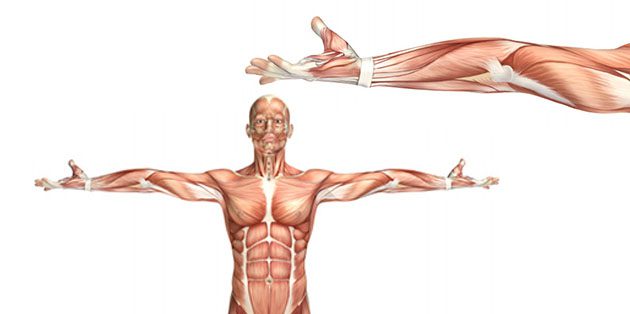What is Muscular Dystrophy?
A muscular dystrophy is a group of the condition affecting skeletal/voluntary muscles leading to progressive weakness and degeneration of them. It is not a single condition but there are more than 30 types of this disease arranged under nine main categories depending on the age of onset, group of muscles initially affected, the degree and speed of muscular weakness and deterioration.

Types of Muscular dystrophy:
- Duchenne Muscular Dystrophy (DMD): the most common form of dystrophy affecting mainly boys. Symptoms are first noticed when the child is about the age when he begins walking and by the age of ten years he may be in need of braces to help him walk. It is an X linked recessive genetic disorder and caused due to defect information of a protein called dystrophin which helps in maintain the muscle cell membrane intact.
- Becker Muscular Dystrophy (BMD): less severe than DMD, again mainly affecting boys but survival rates are better. It is caused due to mutation in the gene controlling production of dystrophin protein.
- Congenital Muscular Dystrophy (CMD): present from the time of birth and has a poor prognosis. It may also be associated with brain malformations like hydrocephalus and Lissencephaly
- Distal Muscular Dystrophy: occurs after age of 20 years and affecting mainly the muscles of lower limbs and upper limbs.
- Emery-Dreifuss Muscular Dystrophy: is a condition that starts in childhood or adolescent age. There is the progressive weakness with contractures beginning in lower limbs extending upwards and is usually associated with heart disorders.
- Facioscapulohumeral Muscular Dystrophy: symptoms usually appear at the onset of adulthood (late teens) and the progress is rather rapid. It is an X linked dominant disorder hence can affect both males and females. Initially muscles of the shoulder, upper limbs and face are affected.
- Limb-Girdle Muscular Dystrophy: affects both the sexes and is usually an adult-onset disorder affecting the muscles of both the limbs.
- Myotonic Muscular Dystrophy: is a condition in which there is delayed muscle relaxation along with muscular weakness and wasting.
Oculopharyngeal Muscular Dystrophy: occurs after the age of forty and affects mainly muscles of the eye first, followed by face, throat, pelvic and shoulder muscles.
Causes: It is mainly a genetic disorder inherited by either X linked dominant or recessive gene and usually runs in family and in some spontaneous mutation of the gene may occur.
Symptoms of Muscular Dystrophy:
The signs and symptoms of muscular dystrophy are
- Progressive loss of muscle mass
- Inability to walk
- mpaired balance
- Abnormal gait or waddling gait
- Walking on toes
- Difficulty in respiration
- Difficulty in swallowing
- Difficulty in bowel control
- Muscular pain and stiffness
- Difficulty in coordinated movements like running, jumping
- Abnormal spinal curvatures
- Frequent falls
- Joint contractures leading to a club foot, claw hand, etc.
- Loss of reflexes
- Drooping eyelids
- Loss of muscle tone
Diagnosis of Muscular Dystrophy:
Muscular dystrophy is diagnosed by
- DNA testing for the defective gene,
- checking blood level of creatine kinase enzyme
- Electromyography
- Muscle biopsy
- ECG and 2-D Echo to test heart function
- Respiratory function tests
- Nerve conduction tests
HOMEOPATHY TREATMENT FOR MUSCULAR DYSTROPHY:
Muscular dystrophy is a progressive condition without any remission and the severity depends on the type of dystrophy and its speed of spread. There is no treatment in conventional medicine though research is ongoing on gene therapy Homeopathic medicine with its constitutional approach where it dwells on the social, mental and physical makeup of a person, helps to go to the root of the disease and help in treatment and control of Muscular Dystrophy and its associated symptoms. It helps to slow down the progress of disease and bring down the severity of symptoms with no side effects.
For more about the treatments and services offered by Dr. Care Homeopathy Call Us @ 07337557853.


